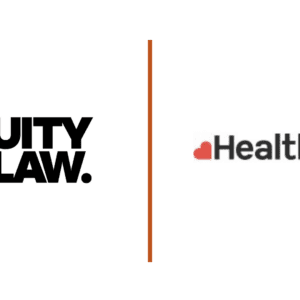Government Ethnicity Pay Gap Reporting Guidance For Employers
Key Contact: Claire Knowles
Author: Laura Spence
Earlier this year, the Government finally confirmed that it will not be asking employers to publish their ethnicity pay gaps. However, for employers that do decide to publish these statistics, they can refer to guidance. The aim of this guidance is to develop a consistent, methodological approach to ethnicity pay gap reporting which can lead to meaningful action, while remaining proportionate and without adding undue burdens on the business/organisation.
The road to this decision:
This topic first came to light around the time of the 2017 general election, where Theresa May’s manifesto contained a pledge to require all large employers to publish their ethnicity pay gaps. A consultation on ethnicity pay gap reporting was then published in October 2018 but closed in 2019. In 2019 the topic remained quiet, with Boris Johnson’s manifesto for the 2019 general election failing to mention ethnicity pay gap reporting at all. Last year, the topic was brought back up by way of preliminary debate however, in March, the Government finally provided clarity on the topic, confirming that they would not be making ethnicity pay gap reporting mandatory.
Why did the Government reach this decision?
The Government claim that ethnicity pay gap reporting is subject to “significant obstacles”, being far more complex than gender pay gap reporting. It was thought this would create unnecessary pressure on employers who are still trying to recover from the pandemic. Nonetheless, for employers that wish to report on these figures at least internally, this guidance provides a tool for employers to calculate their figures consistently and methodologically.
The guidance is thorough, and should be reviewed in detail by those who wish to report on their ethnicity pay gaps however, this article aims to provide a useful introduction. In short, the guidance covers 5 main topics:
- How data should be collected
- Gathering the required payroll data for ethnicity pay calculations
- Making ethnicity pay calculations
- Understanding and analysing the results of the calculations
- Developing an action plan to address any identified disparities
By way of brief summary, the guidance says:
Understanding and reporting your data
The guidance proposes some of the categories that employers may wish to look at. This includes job roles, locations, full-time or part-time work status, pay bands and length of service.
When it comes to reporting ethnicity pay calculations, it is recommended that a range of calculations are carried out, broken down by ethnicity categories, rather than relying on a single calculation. The complexity of ethnicity pay gap reporting means that using just one overarching measure is not as useful as considering all the recommended calculations, and producing an analysis for individual ethnic minority groups. The guidance suggests that calculations could include:
- Pay quarters that measure the representation of employees in different ethnic groups at different levels in an organisation.
- Representation of ethnic groups across the organisation as a whole
- Mean and median pay gaps that measure the difference between average earnings and bonuses in an organisation for different groups.
- Proportion of employees that did not disclose their ethnicity when asked by their employer.
Reflection
One of the key takeaways from the guidance is the importance of reflection and improvement. It is advised that employers add a narrative alongside their figures to explain the disparities and the action they have taken to address these.
Further, employers are advised to develop an action plan which explains how they intend to address the unfair pay gaps. A good action plan should name clear measurable targets that demonstrate a commitment to achieving these targets within a chosen time frame. The idea being, this sends a strong signal about an organisation’s commitment to understanding and addressing any unfair ethnic disparities which in turn, has both internal and external benefits. From an internal perspective, this may have an overall positive impact on the culture and staff retention rates. From an external perspective, demonstrating this commitment should attract a wider pool of recruits and clients.
Collecting ethnicity data
The guidance emphasises the complexity of the task, and that it should be approached with sensitivity and transparency. It is suggested that the best way to collect ethnicity data is to ask employees to report their own ethnicity, but always with an option to opt-out such as ‘prefer not to say’.
The guidance strongly discourages reporting “binary” reporting (involving only 5 broad ethnic groups) which is the approach currently adopted by most businesses. The reason being, “this will mask detail and nuance which might be vital for understanding ethnicity pay gaps”. Employers should take a more granular approach to ethnicity pay gap reporting wherever possible and include as many ethnic groups as possible, whilst ensuring statistical robustness.
Something very important to be mindful of is the GDPR implications of collecting ethnicity related data. An employee’s ethnicity is considered a special category data under GDPR therefore, employers must inform their employees of how their data will be used and how it will be kept, for example to ensure it is kept securely.
Preparing payroll data
The guidance contains a very detailed section on how to prepare payroll data, so it is advised that employers take the time to familiarise themselves with this. In short, the guidance provides the following steps:
- Make a list of employees and their ethnicity
- This involves making a list of ‘relevant employees’ and ‘full pay relevant employees’ and the ethnicity of each relevant employee and full pay relevant employee.
- For this purpose, ‘relevant’ employees are those that have a contract of employment or are self-employed.
- Add ordinary pay (e.g basic pay, holiday pay, allowances and overtime)
- Add bonus pay.
- Add weekly working hours.
- Work out your employees’ hourly pay.
Making calculations
The guidance contains a detailed section on how to make the calculations, including some useful worked examples. The following calculations are recommended:
- Percentage of employees in different ethnic groups in each hourly pay quarter.
- The average and median ethnicity pay gap for hourly pay
- The median ethnicity pay gap using hourly pay
- Representation of ethnic groups in your organisation
- Percentage of employees whose ethnicity is ‘unknown’ or ‘prefer not to say’
- Percentage of employees in different ethnic groups receiving bonus pay
- The average ethnicity pay gap for bonus pay
- Median ethnicity pay gap for bonus pay
Final thoughts
Ethnicity pay gap reporting may be daunting for some organisations however, this guidance is in place to support employers and hopefully ease some of the worry. For what seems like a large task, it may be wise to start with encouraging people to share their data before commencing the actual pay gap reporting process. Explaining the significate of diversity in a workplace and how this aligns with the organisation’s values is likely to make people more open to contributing to the process.
If you would like any help or assistance with the topics covered in this article, please contact the Acuity Employment team.






